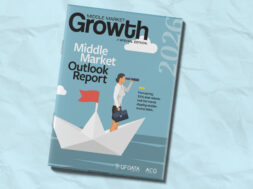AI Bears Doubt Its Promise to Deliver
Proponents say artificial intelligence will revolutionize many industries, including M&A—but skeptics say this AI revolution may not materialize

In recent years, the artificial intelligence (AI) industry has grown rapidly, stacking big promises and billions of dollars in investments to reach ever more staggering heights. Generative AI (GenAI) investments by private equity and venture capital firms swelled in 2023, more than doubling from the previous year, and Deloitte reported that by the end of 2023, roughly 10% of private investment firms were using AI-based solutions for “relatively complex” tasks.
However, a contingent of skeptics has begun to reach critical mass, with some experts coming out as bearish on AI’s potential and calling into doubt the once widely accepted wisdom that it will transform industries. The implications could be far-reaching for M&A dealmakers, both those investing in AI, and those using the technology as part of their investment workflows.
“I don’t deny that it’s a great tool for creating fake images,” says Lukasz Tomicki, the founding partner of investmet firm LRT Capital, the co-founder of two software companies and an outspoken critic of AI. “The idea that it’s going to revolutionize productivity and take away white-collar jobs is a completely different matter.”
I don’t deny that it’s a great tool for creating fake images. The idea that it’s going to revolutionize productivity and take away white-collar jobs is a completely different matter.
Lukasz Tomicki
LRT Capital
Logistical Setbacks
A June 2024 research paper from Goldman Sachs offered a balanced picture, with arguments both for and against AI’s game-changing potential. But the critics landed some heavy blows.
Jim Covello, head of global equity research at the investment banking giant, pointed to AI’s high costs as a potentially prohibitive challenge, noting that “the idea that technology typically starts out expensive before becoming cheaper is revisionist history.”
The Wall Street Journal reported last September that Amazon, Alphabet, Meta and Microsoft spent a combined $52.9 billion on AI in the second quarter of this year alone. The same article noted that a partner at Sequoia Capital estimated AI businesses would need to deliver $600 billion in revenue to justify the cost of data centers and chips in 2024—an amount the industry is nowhere close to generating. Meanwhile, OpenAI is expected to lose $5 billion this year and make $3.7 billion (though the company just completed a new funding round, raising $6.6 billion).
In the same Goldman Sachs paper, Brian Janous, co-founder of Cloverleaf Infrastructure and previous vice president of energy at Microsoft, argued that infrastructure limitations also constitute a major roadblock to AI’s advance. Grid capacity would need to grow significantly, he says, and power supply will be a “significant constraint” on AI, given the time, work and cost associated with infrastructure improvement and expansion.
Another challenge to the nascent technology is the possibility that organizations are rapidly running out of the data they need to train it. A recent study from the Data Provenance Institute found that from April 2023 to April 2024, many websites that previously served as sources for AI became restricted, with OpenAI specifically cut off from 25.9% of high-quality data sources. Another study from Epoch AI found that large language models (LLMs) like ChatGPT could run out of data by 2026, and potentially even earlier if overtrained. (OpenAI’s Sam Altman has presented synthetic data—that is, AI-created data—as a solution to these issues, but critics note that this can lead to increasingly Hapsburgian outputs.)
Highlighting the Flaws
Even if AI overcomes these logistical hurdles, critics remain skeptical that it can deliver on its hype.
In the Goldman Sachs report, Covello noted that AI doesn’t track with other transformative technologies like the internet or smartphones, which had clear use cases and roadmaps at the time of their inception. “AI bulls seem to just trust that use cases will proliferate as the technology evolves. But eighteen months after the introduction of generative AI to the world, not one truly transformative—let alone cost-effective—application has been found,” Covello argued.
In its current iteration, critics say AI is deeply flawed, often producing hallucinations—that is, false information presented as fact—that call into question the quality of their outputs. A July 2024 research paper found that LLMs like ChatGPT, arguably the most advanced form of AI currently available, consistently hallucinate, with one of the authors telling TechCrunch that the best models produce hallucination-free text only 35% of the time.
In other cases, skeptics believe that AI’s current abilities are being overstated. Experts argue that AI’s efficacy is being graded on outdated benchmarking tools, and others have called out what some are calling AI washing (a term that, similar to greenwashing, means that companies are presenting the façade of AI without any meaningful AI implementation).
Tomicki argues that some of these overstated claims amount to fraud. “I think the fraud is widespread,” he says. “I think even large companies are essentially, to me, doing fraud.” He points to Google’s impressive demo video for their Gemini AI model that is suspected of being faked (they ended up unlisting it in September 2024); Tesla’s fake demos of their self-driving technology; and Amazon’s Go stores that allowed a contactless shopping experience and claimed to be AI-powered, but ended up appearing to be mainly powered by thousands of remote workers in India instead.
AI proponents may argue that this flood of bad news is only evidence of AI hitting the bottom of a “hype cycle,” roughly defined as the slump following the thrill of and overinvestment in a new technology and preceding that technology’s eventual success and widespread adoption. However, analysis from The Economist found that the hype cycle is far from the norm, with perhaps only 20% of such technologies rising from the slump to ultimately succeed.
What all these challenges add up to are fears that AI has hit a plateau in its abilities and that further development to reach a stage where the applications can match the hype may be cost-prohibitive, or at least much slower than expected. Gartner analysis predicted that 30% of GenAI projects will end up abandoned in 2025, pointing to “poor data quality, inadequate risk controls, escalating costs or unclear business value.”
While it might seem that these roadblocks mainly impact the AI giants like OpenAI or Google’s Gemini, many of the platforms that private equity firms and other dealmakers have invested in or are using are built on top of those tools, meaning that any failures or financial problems are likely to trickle down.
Takeaways for Dealmakers
However, most of AI’s critics aren’t necessarily saying the technology is a dead end. And AI proponents say the technology’s limitations may actually make the case for more investment.
Microsoft, which recently launched a new tool that claims it can fix AI hallucinations, is partnering with BlackRock on a fund that aims to invest up to $100 billion in capital into AI infrastructure.
Frister Haveman, the founder and CEO of Gain.pro, a private market intelligence platform that utilizes AI, takes a nuanced stance. “I believe AI can both be a bubble and overhyped and that there’s still real value to be captured. I’m not sure if the large AI companies have done us a great service by (selling) AI as this huge gamechanger, whereas in reality, it’s a tool in the toolbox,” he says.
Even if AI doesn’t meaningfully evolve beyond its current iteration in the near-term, Haveman still thinks it has useful applications for PE adopters, pointing to legal due diligence and investment target identification as two of the best use cases for AI in the dealmaking space today.
Sarah Shizas, director of research and strategy at Cook M&A Advisory Services, agrees, saying that while the current technology has limitations, it’s still very useful to their firm, calling it “a work in progress.” Shizas says her firm currently uses AI-based tools to source companies for their research-driven deal process, noting that AI has broadened the number of companies they analyze, though the process still requires a good deal of internal review and factchecking by human experts. Her firm is also in the very early stages of building a proprietary AI platform using the ChatGPT engine.
“Right now, we see it as a tool to save us time,” she says. “I’m not looking to lay off any research associates—it’s more like, now you have five more hours to do higher-quality analysis.”
Right now, we see (AI) as a tool to save us time. I’m not looking to lay off any research associates—it’s more like, now you have five more hours to do higher-quality analysis.
Sarah Shizas
Cook M&A Advisory Services
However, some firms may be better served by directing their funds and resources toward different technological improvements. “I think the overfocus on AI or GenAI is a little bit dangerous,” says Haveman. “There’s a lot of other technologies that still need to be adopted within private equity and M&A—just building a modern tech stack consisting of the CRM, leveraging external data, unlocking internal data.”
Firms looking for an AI application that’s a true gamechanger for the dealmaking space and beyond may need to temper their expectations and expand their timelines, or at least hedge their bets.
“Knowing the technology, understanding how it works, I already think (LLMs) are plateauing in their capabilities,” says Tomicki. “They’re good at recalling data and giving you an answer that sounds sensible and plausible, which again, in some applications is a perfect solution. But in many, where there are such things as facts, it is not. I think the adoption will be a lot lower and slower than people think.”
Hilary Collins is ACG’s Associate Editor.
Middle Market Growth is produced by the Association for Corporate Growth. To learn more about the organization and how to become a member, visit www.acg.org.


